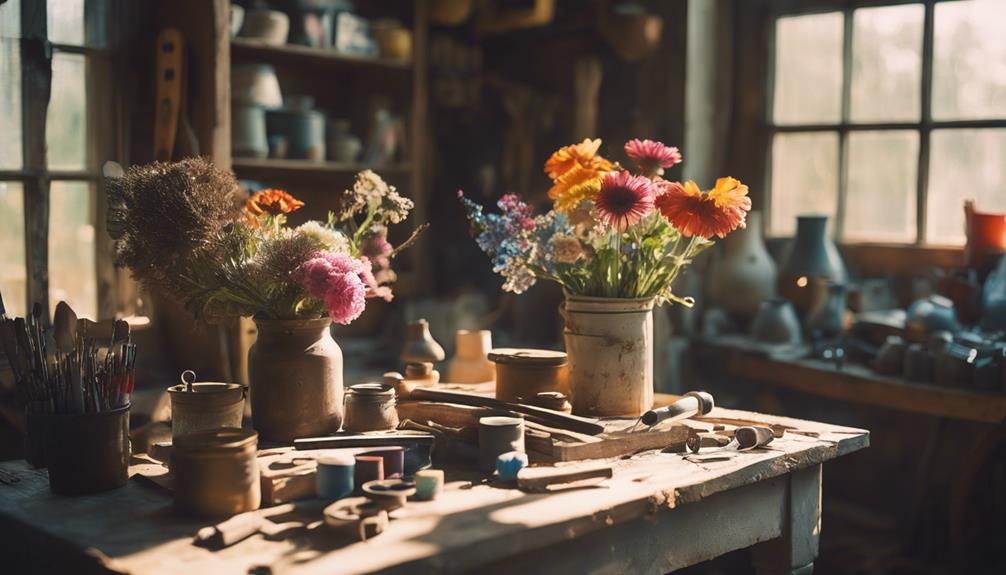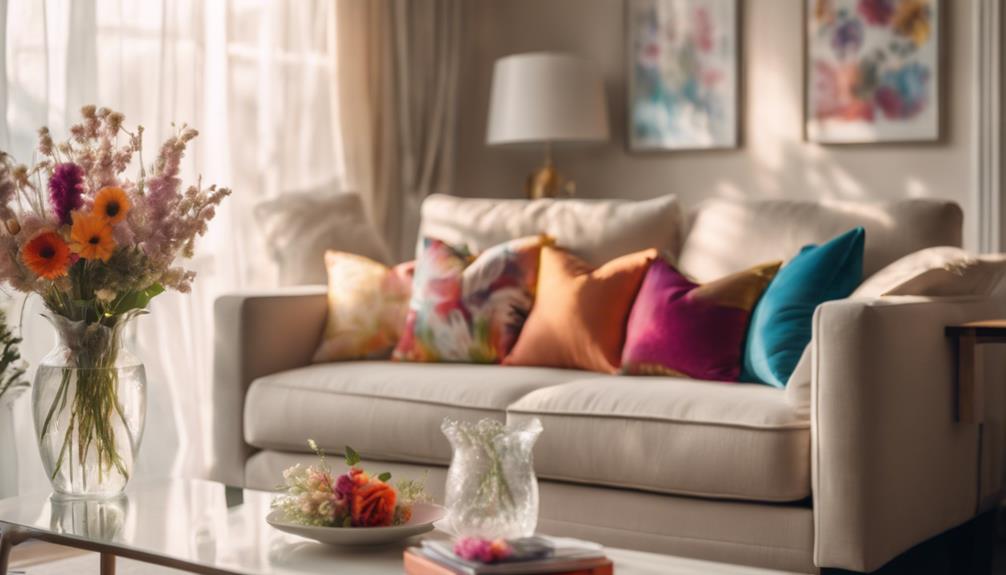You can transform secondhand wood furniture into treasures by assessing its quality first. Check for solid construction and minimal damage. Then, unleash your creativity! Old dressers can become chic bathroom vanities, while wooden pallets can craft stunning garden benches. Choose the right refinishing materials based on wood type, opting for eco-friendly products like milk paint for a safer approach. Don't forget to seek inspiration from DIY blogs and local workshops. Each piece you transform not only beautifies your space but also reflects your unique style. Stick around to uncover even more innovative ideas and tips!
Key Takeaways
- Assess the structural integrity of secondhand wood furniture to ensure durability and longevity before starting any transformation project.
- Use creative repurposing ideas, like turning old dressers into vanities or ladders into bookshelves, to enhance aesthetics.
- Choose appropriate refinishing materials based on wood type, ensuring high-quality stains or finishes for a professional look.
- Adopt eco-friendly refinishing practices by using non-toxic products and ensuring proper ventilation during the process.
Assessing Furniture Quality
When assessing furniture quality, you should focus on its structural integrity and the condition of the wood to ensure it'll last for years to come.
Look for signs of strong construction, like sturdy joints and even finishes, indicating that the piece can withstand daily use. If you're considering a family heirloom, its history often reflects high quality.
Pay attention to the type of wood; hardwoods like oak or maple are preferable because they endure wear and tear better than softer woods. Inspect for scratches, dents, or water damage that could compromise durability.
Pieces with good bones—those that feel solid and well-built—are likely to provide long-term satisfaction. Prioritize these factors, and you'll find furniture that adds character and resilience to your home.
Creative Repurposing Ideas
Finding high-quality furniture opens up a world of creative repurposing ideas that can breathe new life into old pieces. You can take advantage of these ideas to transform your space uniquely and stylishly. Whether it’s giving a vintage dresser a fresh coat of paint or turning an old table into a functional desk, the possibilities are endless. Additionally, for a more flexible and cost-effective approach, furniture rental solutions for businesses offer an excellent way to experiment with different styles without committing to permanent purchases. This allows you to create a dynamic space that can evolve with your needs and vision over time.
Here are three inspiring suggestions:
- Old Dressers: Turn a vintage dresser into a chic bathroom vanity by adding a sink and faucet.
- Wooden Pallets: Use wooden pallets to create a stunning garden bench or outdoor coffee table.
- Ladder Shelves: Repurpose an old ladder into a rustic bookshelf by adding shelves for an eye-catching display.
These projects not only enhance your home but also give your secondhand finds a fresh purpose, showcasing your creativity and style!
Selecting Refinishing Materials

Choosing the right refinishing materials is crucial for enhancing the beauty and durability of your secondhand wood furniture.
Start by considering the type of wood you're working with; hardwoods often require different finishes than softer woods. For lighter woods, natural finishes like oils can bring out their grain, while darker finishes may suit other wood types.
Make sure the materials you select, such as stains, sealants, or paint, are high-quality, as this will help preserve the furniture's integrity.
Visit local retailers with expertise in refinishing for guidance; they can recommend the best products based on your specific piece.
Eco-Friendly Refinishing Practices
Selecting high-quality refinishing materials is just the start; now it's time to consider eco-friendly practices that protect both your furniture and the environment. By adopting sustainable methods, you not only enhance your piece but also contribute to a healthier planet.
Here are three eco-friendly refinishing practices to keep in mind:
- Use Non-Toxic Products: Opt for eco-friendly paints and finishes, like milk paint or natural oils, that don't emit harmful chemicals.
- Dispose Responsibly: Ensure you dispose of any leftover materials, brushes, or tools in an environmentally conscious way.
- Ventilate Properly: Always work in well-ventilated spaces to minimize harmful fume exposure while refinishing.
Finding Inspiration and Resources

You can often discover inspiration for your furniture projects through creative repurposing ideas shared in blogs and social media. Follow DIY influencers who transform old pieces into stunning designs, and take note of their techniques.
CORT also provides resources for stylish reclaimed furniture, showcasing how secondhand finds can fit your aesthetic. Visiting community workshops can boost your skills and confidence in restoration.
Don't forget to explore local thrift stores or online marketplaces for hidden gems waiting to be revitalized. Engaging with eco-friendly practices not only supports sustainable living but also connects you with like-minded individuals.
Embrace the journey of transforming your furniture, and let these resources ignite your creativity!
Conclusion
Transforming secondhand wood furniture into treasures is like discovering hidden gems in a vast sea of possibilities.
By assessing quality, exploring creative ideas, and choosing eco-friendly materials, you can breathe new life into these pieces while showcasing your unique style.
Embrace the journey of repurposing and let your imagination run wild, as each item tells a story waiting to be rewritten.
With a little effort, you'll create functional art that not only beautifies your space but also honors the environment.










